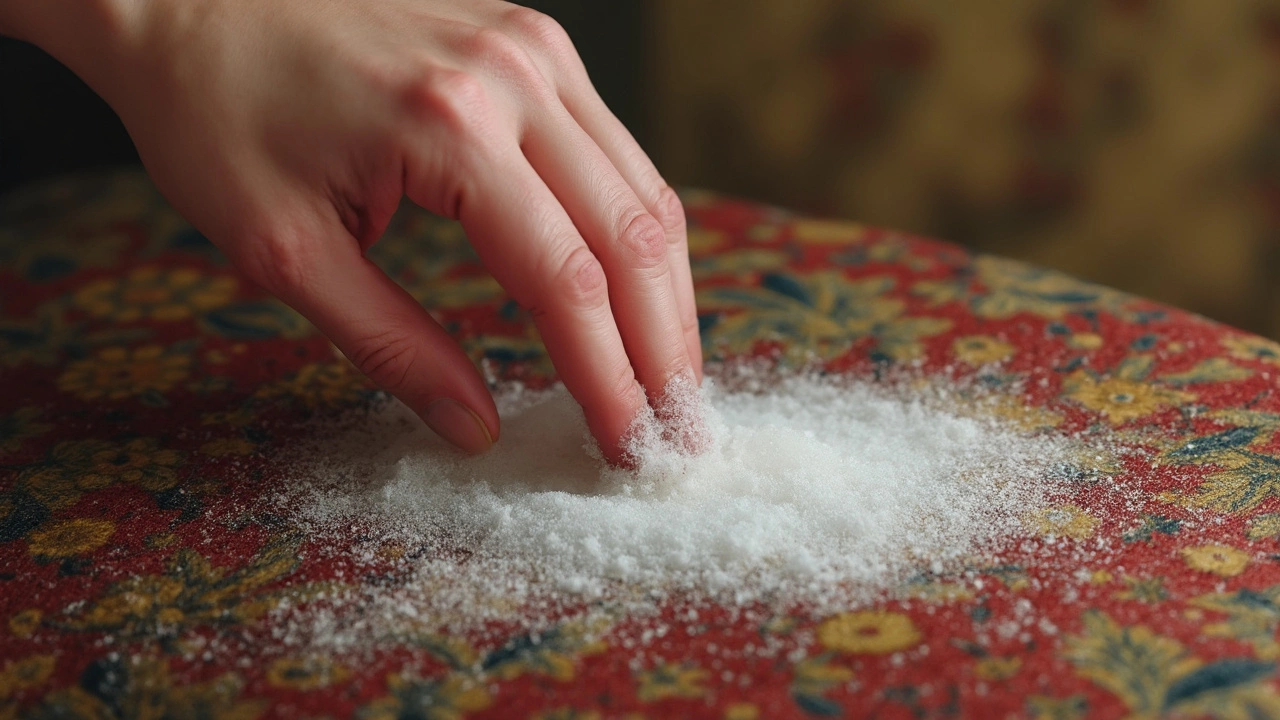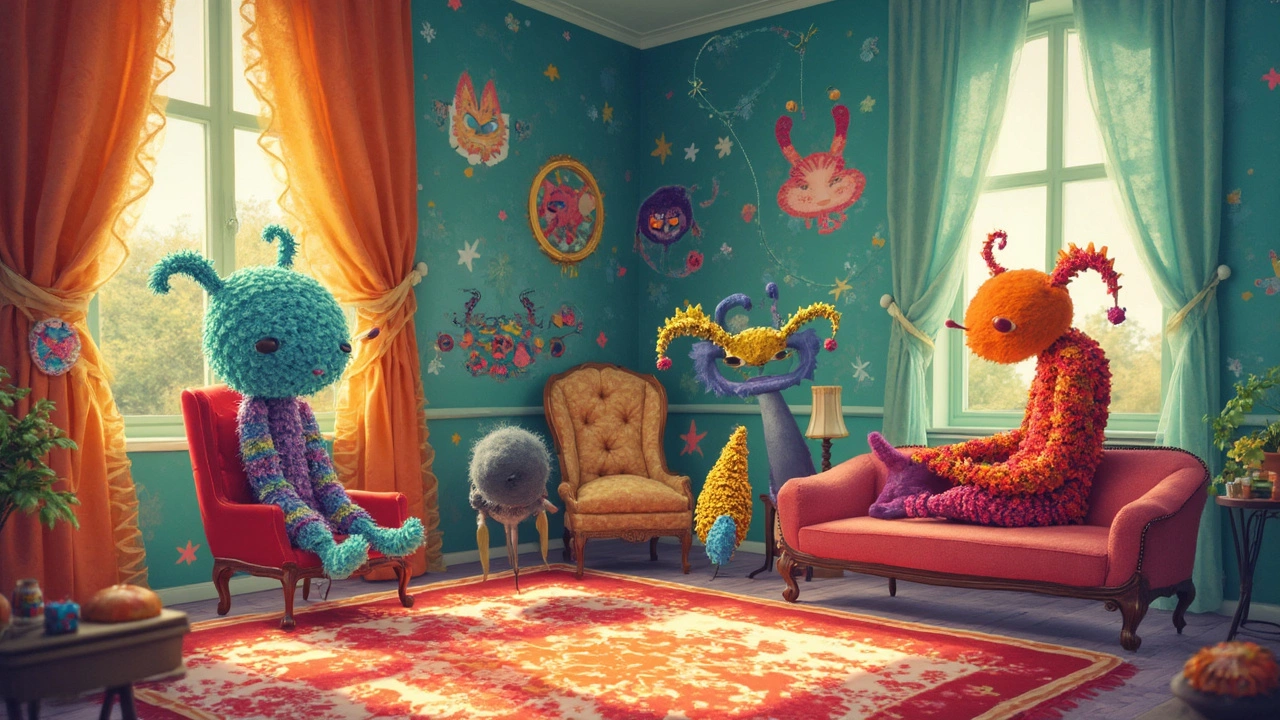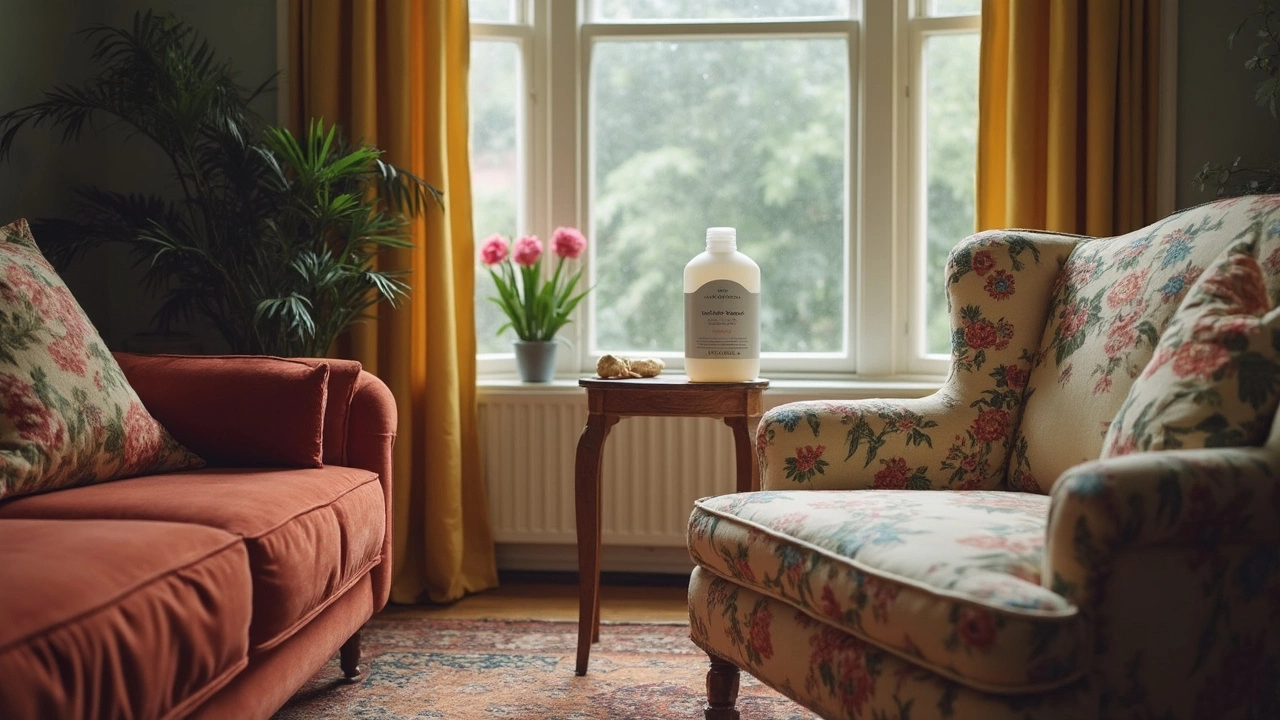When it comes to cleaning upholstery, picking the right detergent isn't just about removing dirt—it's about preserving the fabric too. No one wants their favorite couch to fade or fray after a cleaning mishap, right? Whether it's your sofa, chairs, or car seats we're talking about, there's a balance to be struck between effective cleaning and gentle care.
Before jumping into the world of detergents, it's key to know what kind of fabric you're dealing with. Natural fibers like cotton and wool have different care needs compared to synthetics like polyester or microfiber. Your upholstery's fabric tag can be a goldmine of information, often hinting at what to avoid—like bleach or abrasives.
Then, there are the types of detergents. From liquids to powders, the market is brimming with options. Specialized upholstery cleaners are usually your best bet. They are designed to tackle grime without being too harsh. And if you're dealing with spills or stains, spot cleaners can be real lifesavers.
- Understanding Your Upholstery Fabric
- Types of Detergents for Upholstery
- Spot Cleaning Tips
- Eco-Friendly Options
- Practical Maintenance Advice
Understanding Your Upholstery Fabric
When we're talking about cleaning upholstery, knowing your fabric is a game-changer. It sets the rules for what cleaners you can use and how you should care for your furniture in the long run.
Common Upholstery Fabrics
Let’s take a closer look at some of the popular materials. Natural fibers like cotton and wool are pretty hardy, but they do need some extra affection to keep them looking crisp. Cotton offers breathability, but it’s prone to stains, so you may need a stronger detergent. Wool, on the other hand, is fantastic for warmth and durability but tends to shrink if exposed to too much heat or moisture.
When it comes to synthetic fibers, we’re talking about polyester and microfiber. They’re stain-resistant champs but can suffer from heat damage. Microfiber is especially great since it repels liquids pretty well, giving you extra time in case of spills.
Decoding Fabric Codes
If you've ever flipped the cushions on your sofa, you might've noticed some fabric codes like ‘W’ or ‘S’. These tags are super handy:
- W: Use a water-based detergent.
- S: Go for stronger solvent-based cleaners.
- W/S: Either type is okay.
- X: Stick to vacuuming; water or solvents might do damage.
These codes make life a lot easier when choosing a detergent. No need to play guessing games!
Table of Fabric Care Tips
| Fabric Type | Care Guidelines |
|---|---|
| Cotton | Avoid direct sunlight; use mild detergent |
| Wool | Avoid excessive moisture; dry clean when possible |
| Polyester | Machine washable; avoid high heat |
| Microfiber | Spot clean with mild detergents |
So, remember to check those tags and be mindful of the fabric characteristics. Choosing the right cleaning method isn’t just smart; it prolongs the life of your furniture, making it look sharp for years to come.
Types of Detergents for Upholstery
Choosing the right detergent for your upholstery depends on several factors, including the type of fabric and the kind of dirt or stains you're tackling. Here's a breakdown of different detergent types to help you make an informed choice.
1. Upholstery-Specific Detergents
These cleaners are specially formulated to deal with the types of dirt and stains common in fabric-covered furniture. They are usually pH-balanced to be gentle on a variety of fabrics, ensuring they clean effectively without causing damage. Look for options that mention specific fabric types, like cotton, microfiber, or synthetic blends.
2. All-Purpose Cleaners
If you're looking for something versatile, all-purpose cleaners can be used for various cleaning tasks, not just for upholstery. However, it's crucial to test them on a small, hidden area first to make sure they won't discolor or damage your upholstery. They might be handy if you're in a pinch but make sure they're marked safe for upholstery.
3. Eco-Friendly and Natural Detergents
Concerns about harsh chemicals and environmental impact have led to a rise in eco-friendly upholstery cleaning options. These detergents often use natural ingredients like plant-based enzymes to break down stains and odors. They're gentle on fabrics and better for our planet. Plus, they tend to have a more pleasant, natural scent.
4. Powdered Detergents
While less common for upholstery, powdered detergents can be effective when dissolved in water. They're often more economical and can be quite potent on tougher stains. However, they might require a bit more effort to rinse out of fabrics, so use them cautiously to avoid any residue.
5. DIY Solutions
Got everyday stains and no cleaner at hand? You can whip up a DIY cleaning solution using common household items like vinegar, baking soda, or dish soap. This can be surprisingly effective for minor spills and stains. Just remember to blot, not scrub—that can push the stain further into the fabric.
Ultimately, the best detergent for your upholstery is one that fits your specific needs. Whether you're dealing with pesky pet hair or a stubborn coffee stain, having the right cleaner at hand makes all the difference in keeping your furniture in top shape.

Spot Cleaning Tips
Everyday mishaps happen, and being ready with the right spot cleaning tips can make a world of difference in keeping your upholstery fresh. Let's discuss how you can tackle those surprise stains quickly and effectively.
Immediate Action
First things first, the quicker you act, the better. Blot, don't rub, the spill with a clean cloth to prevent spreading. Rubbing can push the stain deeper into the fabric—definitely not what you want.
Choosing the Right Detergent
When it comes to tackling the stain itself, pick a detergent that's suited for your specific fabric. You don't want to use something too harsh that could damage the material. A little research goes a long way, but spot test any cleaner on a hidden area first.
DIY Solutions
If store-bought isn't your thing, homemade solutions can be handy. A mix of water and a bit of mild dish soap can tackle a lot of common stains. Just remember, less is more; excess soap can be difficult to rinse out.
Persistent Stains
For those pesky, stubborn stains, repeated application might be necessary. Patience is key here. Applying the cleaner, letting it sit, and blotting again can gradually lift the stain. Just keep the fabric's moisture at a minimum—overly wet upholstery is a no-go.
Helpful Tool
If you're into data, consider keeping track of your most frequent stains. It might sound a bit much, but knowing what stains are regular offenders can help you adjust your cleaning arsenal accordingly.
| Common Stain | Suggested Cleaner |
|---|---|
| Coffee | 1 part white vinegar + 1 part water |
| Wine | Sparkling water |
| Grease | Small amount of cornstarch |
Spot cleaning isn't just about removing a mark; it's about keeping your upholstery looking its best with the least hassle. Armed with these tips, you'll be ready for whatever life spills your way.
Eco-Friendly Options
Looking to clean your upholstery while keeping your environmental impact low? Eco-friendly cleaning solutions might be your answer. Traditional detergents can have harsh chemicals that aren't great for the planet—or your living room air quality.
First off, you can consider detergents made from plant-based ingredients. These are free of phosphates and synthetic fragrances, making them a better choice for the environment and sensitive noses. Brands like Seventh Generation and Ecover have been making waves with their earth-friendly cleaning products.
Another option is to make your own DIY cleaning solution. You'll just need some everyday items: a mixture of vinegar and baking soda can tackle lots of everyday grime. Here's a quick recipe:
- Mix 1 part water to 1 part vinegar in a spray bottle.
- Add a tablespoon of baking soda and let it dissolve.
- Gently spray on the upholstery and wipe with a soft cloth.
And don't forget about those old-school solutions, like using a steam cleaner with just water. That'll clean effectively without any added chemicals. Some steam cleaners also have attachments specifically for fabric care , making the job even simpler.
For those who want specifics: did you know that according to a 2023 sustainability report, 78% of customers believe that using eco-friendly cleaning products makes a positive impact on their household and environment?
Remember, choosing eco-friendly products or methods isn't just good for Mother Earth—it's often gentler and safer for your family too.

Practical Maintenance Advice
Keeping your upholstery in top shape doesn't have to be a chore. Regular care can make a big difference in how long your furniture looks crisp and clean. Start by establishing a simple cleaning routine. Dust and dirt are the biggest enemies here, so a regular vacuum is essential.
Routine Vacuuming
Make it a habit to vacuum upholstered furniture at least once a week. Focus on crevices and cushions where crumbs and dust tend to hide. Use the appropriate nozzle to get into those tight spots. This not only removes surface dirt but also prevents abrasive particles from wearing down the fabric.
Spot Cleaning: Act Fast!
Spills happen. When they do, quick action can save you a lot of trouble. Remember, dab—don't rub. This avoids pushing stains further into the fabric. Use a clean white cloth to blot the spill immediately.
For common stains like coffee or juice, having an upholstery cleaner on hand is wise. Apply the cleaner as per the instructions on the label. It's worth noting that too much moisture can lead to issues like mold or mildew.
Professional Cleaning
Consider a professional cleaning service annually for a deep clean. These pros can rejuvenate your furniture without causing damage. This is particularly useful for natural fibers which may require more delicate handling.
Protective Measures
Cushions are not just for comfort. Rotating your cushions regularly ensures even wear and tear. This simple step can prolong the life of your upholstery.
Adding throws or slipcovers is a practical way to guard your furniture against everyday wear and accidental spills.
Avoid Direct Sunlight
Exposure to direct sunlight can fade and weaken upholstery fabrics. If possible, position your furniture out of direct sunlight or use blinds and drapes to shield it.
These basic tips can help keep your upholstery looking fresh and attractive. By taking these measures, you're not only maintaining the cleanliness and appearance of your fabrics but also extending the life of your furniture.
